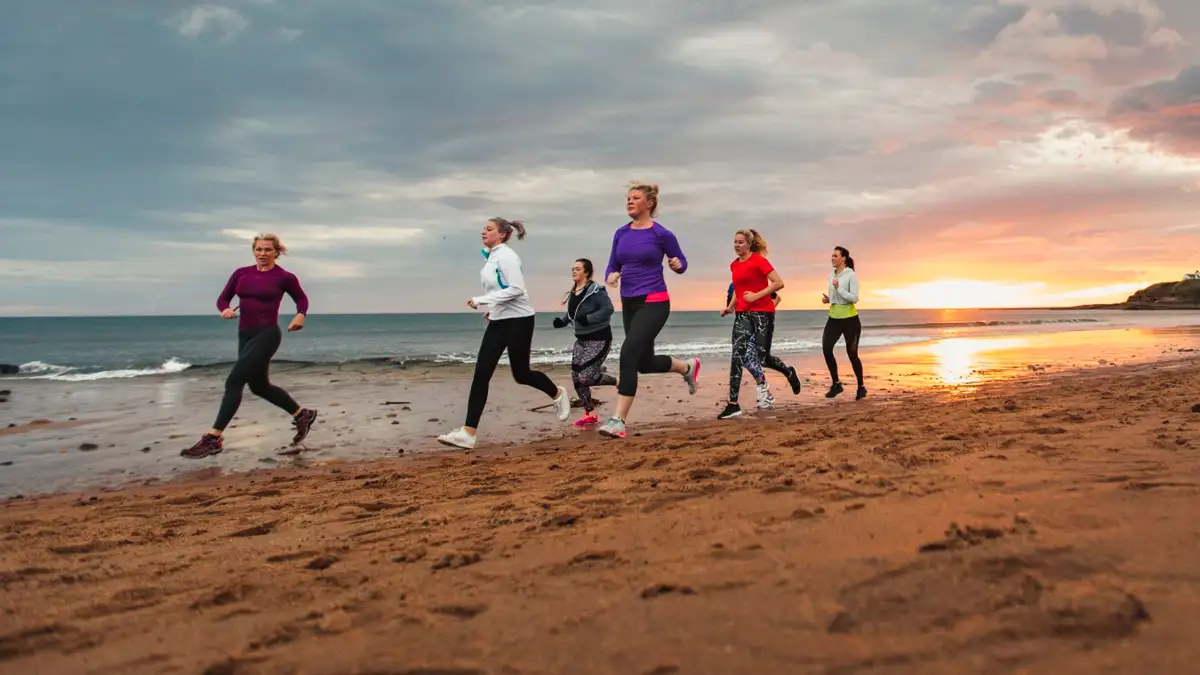
Decoding Body Fat: Which Body Part Loses Fat First in Women?
The Science of Body Fat in Women
Body fat serves essential functions, including energy storage, hormone regulation, and organ protection. Women typically have a higher body fat percentage (20-30% on average) than men (10-20%), due to reproductive and hormonal needs. Fat is stored in two main forms:
- Subcutaneous Fat: Located under the skin, this fat is visible and often targeted for aesthetic reasons.
- Visceral Fat: Stored around internal organs, this fat is linked to health risks like heart disease and diabetes.
Women tend to store fat in specific areas—hips, thighs, buttocks, and lower abdomen—due to evolutionary factors supporting pregnancy and childbirth. This “gynoid” fat distribution differs from men’s “android” pattern, which favors the abdomen. However, where fat is lost first during weight loss is not a simple matter of targeting these storage sites.
Does Fat Loss Follow a Specific Order?
A common myth is that women can choose which body part loses fat first through targeted exercises, known as spot reduction. Research consistently debunks this: fat loss occurs systemically, meaning the body draws energy from fat stores across all areas, not just the exercised region. For example, doing crunches won’t specifically burn abdominal fat; it strengthens muscles but doesn’t dictate fat loss location.
So, which body part loses fat first in women? The order is largely determined by:
- Genetics: Your DNA influences fat storage and loss patterns. Some women lose fat from their upper body (arms, chest) first, while others see changes in their legs or hips.
- Hormones: Estrogen promotes fat storage in the hips and thighs, so pre-menopausal women may lose fat from the upper body or arms before lower body areas. Post-menopause, declining estrogen shifts fat storage toward the abdomen, where fat may be lost first.
- Body Composition: Women with higher visceral fat (around the midsection) may notice waist reduction early, as the body prioritizes metabolizing this metabolically active fat.
- Lifestyle Factors: Diet, exercise, and stress influence fat loss patterns indirectly by affecting hormones and metabolism.
While there’s no universal rule, anecdotal patterns suggest many women notice fat loss first in the face, arms, or upper back, as these areas often have thinner fat layers. Hips, thighs, and lower abdomen—where fat is denser due to estrogen—tend to be more resistant, especially in younger women. However, individual experiences vary widely.
Factors Influencing Fat Loss Patterns
Understanding why fat loss patterns differ requires a closer look at key factors:
1. Hormonal Influences
Hormones like estrogen, cortisol, and insulin play significant roles:
- Estrogen: Promotes fat storage in the lower body, making hips and thighs stubborn areas for pre-menopausal women. During fat loss, the body may prioritize upper body fat stores.
- Cortisol: Chronic stress raises cortisol, increasing visceral fat storage. Stress reduction can accelerate abdominal fat loss.
- Insulin: High insulin levels (from excess sugar or carbs) promote fat storage. A balanced diet helps regulate insulin, aiding systemic fat loss.
In 2025, wearable tech like continuous glucose monitors (e.g., Levels) tracks insulin responses, helping women optimize diet for fat loss.
2. Genetics and Body Type
Your genetic blueprint dictates fat distribution. Women with pear-shaped bodies (wider hips/thighs) may lose upper body fat first, while apple-shaped women (more abdominal fat) may see waist reduction earlier. Genetic testing kits, popular in 2025, can provide insights into fat storage tendencies, guiding personalized strategies.
3. Age and Menopause
As women age, hormonal shifts alter fat distribution. Post-menopausal women often store more visceral fat, which may be mobilized first during weight loss due to its metabolic activity. Younger women, with higher estrogen, may retain lower body fat longer.
4. Diet and Exercise
While you can’t control where fat is lost first, diet and exercise influence the rate and overall pattern:
- Calorie Deficit: A 500-750 daily calorie deficit (through diet and exercise) promotes fat loss (~1 pound per week).
- Exercise Type: Cardio burns calories, while strength training builds muscle, boosting metabolism. Core exercises tone the waist but don’t target fat loss specifically.
- Nutrition Quality: Whole foods reduce bloating and support hormonal balance, enhancing fat loss.
Effective Strategies for Fat Loss and Waist Reduction
While you can’t dictate which body part loses fat first, you can optimize fat loss and enhance your waist’s appearance with these evidence-based strategies, tailored to 2025’s tools and trends.
1. Create a Sustainable Calorie Deficit
Fat loss requires burning more calories than you consume. For a 150-pound woman, a daily intake of 1,500-1,800 calories, combined with exercise, creates a safe deficit.
- Track Calories: Use 2025’s AI-driven apps like MyFitnessPal or Lifesum to log meals and calculate deficits. Aim for 1-2 pounds of fat loss weekly.
- Quality Matters: Focus on nutrient-dense foods to avoid hunger and nutrient deficiencies.
- Tip: Avoid extreme diets (<1,200 calories), as they slow metabolism and risk muscle loss.
2. Optimize Your Exercise Routine
A mix of cardio, strength training, and core exercises maximizes fat loss and tones the midsection.
Cardio for Fat Loss
Cardio burns calories, creating the deficit needed for systemic fat loss. Aim for 150-300 minutes weekly.
- Best Moves:
- Running: Burns ~300-400 calories per 30 minutes (5-6 mph). Try HIIT: 1-minute sprints, 2-minute jogs.
- Cycling: Burns ~250-350 calories per 30 minutes (12-14 mph). Use virtual platforms like Zwift.
- Swimming: Burns ~250-350 calories per 30 minutes (freestyle). Smart goggles track laps in 2025.
- Tip: Use a smartwatch to maintain 60-80% max heart rate. Aim for 3-5 sessions weekly.
Strength Training for Metabolism
Strength training builds muscle, increasing resting metabolic rate (burning ~50 extra calories per pound of muscle daily).
- Best Moves:
- Squats: Target legs and core; 3 sets of 12-15 reps.
- Deadlifts: Engage full body; 3 sets of 10-12 reps.
- Plank Variations: Strengthen core; 3 sets of 30-60 seconds.
- Tip: Use apps like Strong or VR workouts (e.g., Supernatural) for guidance. Train 2-3 times weekly.
Core Exercises for Toning
Core exercises define the waist, enhancing appearance as fat decreases.
- Best Moves:
- Bicycle Crunches: 3 sets of 15 reps per side.
- Russian Twists: 3 sets of 20 twists with a light weight.
- Hanging Leg Raises: 3 sets of 12-15 reps.
- Tip: Do core work 2-3 times weekly, using AR coaching for form.
3. Prioritize Nutrition for Fat Loss
Diet drives fat loss, supporting hormonal balance and reducing bloating.
- Sample Meal Plan (1,600 calories):
- Breakfast: Oatmeal with berries, chia seeds (~300 calories).
- Lunch: Grilled chicken salad with avocado, olive oil dressing (~400 calories).
- Dinner: Baked salmon, quinoa, steamed broccoli (~500 calories).
- Snacks: Greek yogurt, almonds (~200 calories).
- Macronutrients: Aim for 40% carbs, 30% protein, 30% fat, per dietitian guidelines.
- Hydration: Drink 8-12 cups of water daily to reduce bloating. Use smart bottles like HidrateSpark.
- Limit Bloating Foods: Avoid high-sodium or sugary items (e.g., soda, processed snacks).
- Tip: Use 2025’s AI meal planners to customize macros and scan foods for hidden sugars.
4. Address Lifestyle Factors
Lifestyle habits significantly impact fat loss and waist size.
- Sleep: Aim for 7-8 hours nightly to regulate hunger hormones (ghrelin, leptin). Use wearables like Whoop to track sleep quality.
- Stress Management: Chronic stress raises cortisol, promoting visceral fat. Practice 10-minute meditation (apps like Calm) or deep breathing.
- Consistency: Small changes, like 10,000 daily steps (tracked via smartwatches), add up.
- Tip: Join virtual fitness communities on platforms like X for accountability.
5. Strengthen Mental Resilience
Mindset is crucial for sustained fat loss. In 2025, mental health tools enhance motivation.
- Set Realistic Goals: Expect 1-2 inches off your waist in 4-8 weeks, depending on starting point.
- Practice Self-Compassion: Focus on non-scale victories (e.g., energy, strength). Journal with apps like Day One.
- Stay Motivated: Use VR fitness or group challenges to make workouts engaging.
- Tip: Share progress on X to connect with others.
Sample 4-Week Fat Loss Plan
Combine strategies into a structured plan for measurable results:
Week 1: Foundation
- Exercise: 3x 30-min cardio (jogging, ~900 calories), 2x 20-min strength, 2x 10-min core.
- Nutrition: 1,600-calorie diet, replace processed snacks with whole foods, 8 cups water.
- Lifestyle: 7 hours sleep, 5-min meditation.
- Goal: Lose ~0.5-1 pound, establish habits.
Week 2: Build Intensity
- Exercise: 4x 35-min cardio (cycling HIIT, ~1,200 calories), 2x 25-min strength, 3x 10-min core.
- Nutrition: Increase veggies (3 servings), limit sugar (25g daily).
- Lifestyle: 7-8 hours sleep, 7-min meditation.
- Goal: Lose ~0.5-1 pound, refine diet.
Week 3: Optimize
- Exercise: 4x 40-min cardio (running, ~1,600 calories), 3x 25-min strength, 3x 12-min core.
- Nutrition: Balance macros, eliminate one unhealthy habit (e.g., soda).
- Lifestyle: 8 hours sleep, 10-min mindfulness.
- Goal: Lose ~1 pound, enhance consistency.
Week 4: Sustain
- Exercise: 5x 40-min cardio (mix, ~2,000 calories), 3x 30-min strength, 3x 15-min core.
- Nutrition: Maintain balanced diet, focus on sustainability.
- Lifestyle: Continue sleep and stress practices.
- Goal: Lose ~1-2 pounds, reduce waist ~1-2 inches.
Total Expected Loss: ~2-5 pounds, ~1-2 inches off waist, depending on starting point.
Safety and Long-Term Success
- Consult a Doctor: Get clearance if new to exercise or managing health conditions.
- Avoid Extremes: Don’t drop below 1,200 calories to prevent nutrient deficiencies.
- Monitor Progress: Measure waist weekly, but prioritize energy and strength gains.
- Sustain Habits: Maintain 3-4 workouts, balanced nutrition, and mindfulness post-plan.
The Bigger Picture: Why Fat Loss Matters
Reducing body fat, particularly around the waist, enhances health, confidence, and vitality. In 2025, with holistic wellness trending, fat loss aligns with physical and mental well-being goals. While you can’t control which body part loses fat first, systemic fat loss through exercise, nutrition, and lifestyle changes reshapes your body over time. Technologies like AI apps, VR workouts, and wearables make the process engaging and precise.



